is always a fun part for me. It is relatively relaxing because I don’t have to
think about the color, or the brushwork. My only concerns during this stage are
the FORM and the VALUE arrangements. I
find this moment very exciting and inspiring, for the world of the future
painting starts to reveal itself for the first time. You see a kind of magic
evolve in front of you, as the white shapeless gesso surface turns into a
suggestive two-dimensional world. True magic, indeed. But that’s the essence of
Art, after all. In its core, it still
echoes the ancient magical ritual.
These are the colors
I use for my underpainting. From left to right: titanium white, yellow ochre,
cadmium red light, alizarin crimson, burnt umber, permanent red-violet and
cobalt blue.
The underpainting in progress.
The finished
underpainting, and a detail.
safety of the “harbour”, and “sail” towards the unpredictable open waters of the
“Ocean”. Before that I might address Minerva ( the Roman goddess of poetry,
wisdom, art, magic, etc.) in a quick prayer, asking her to help me and my
little “ship”, to reach the other side safe and sound.
Each painting is (should
be) a new adventure, a unique act of discovery.
famous French author and critic, said: “ The only true voyage of discovery …
would be not to visit new landscapes, but to possess other eyes, to see the
universe through the eyes of another, of a hundred others, to see the hundred
universes that each of them sees”. (Also often seen
translated in the shortened form: “The only real voyage of discovery consists
not in seeing new landscapes, but in having new eyes)”.


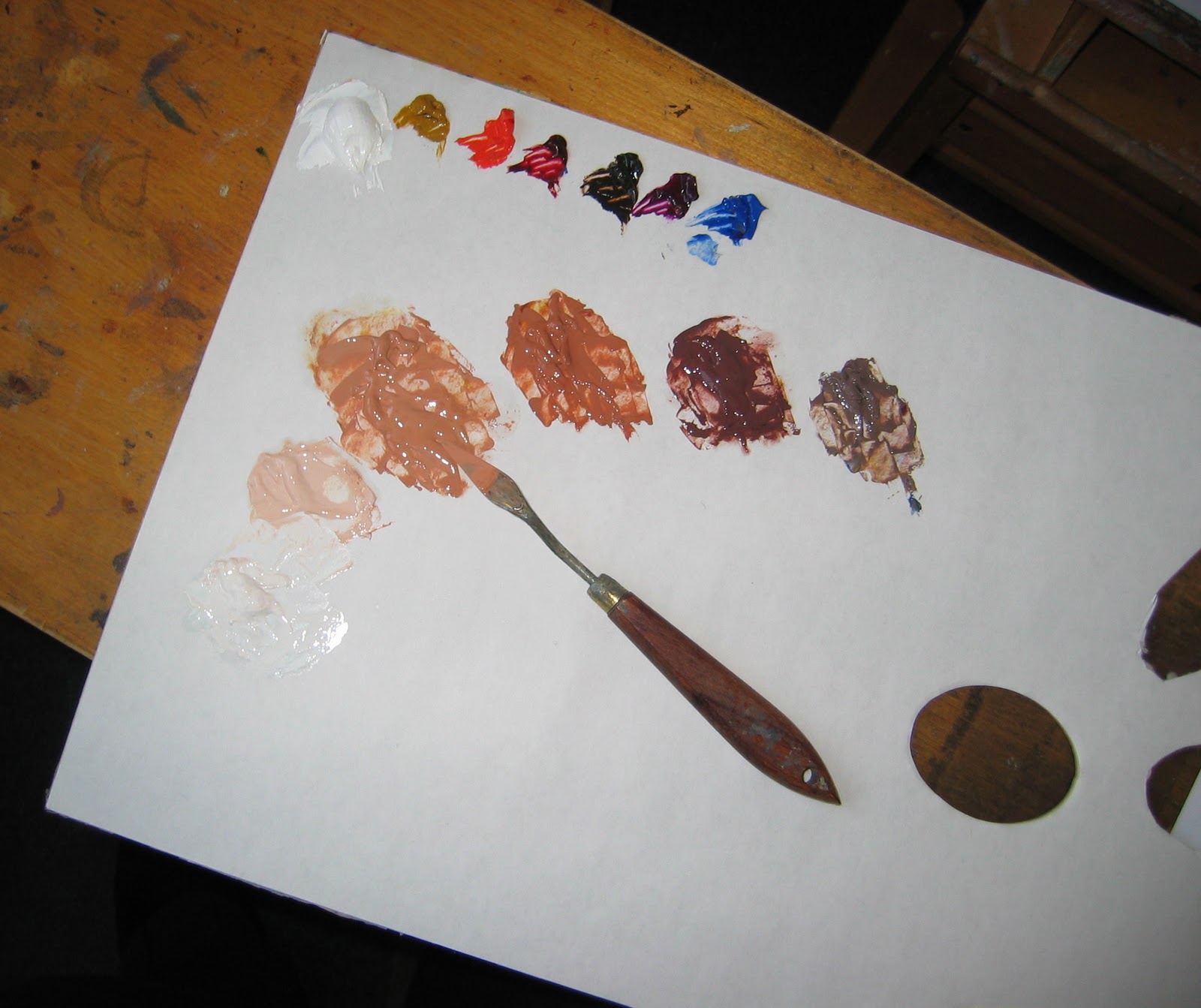
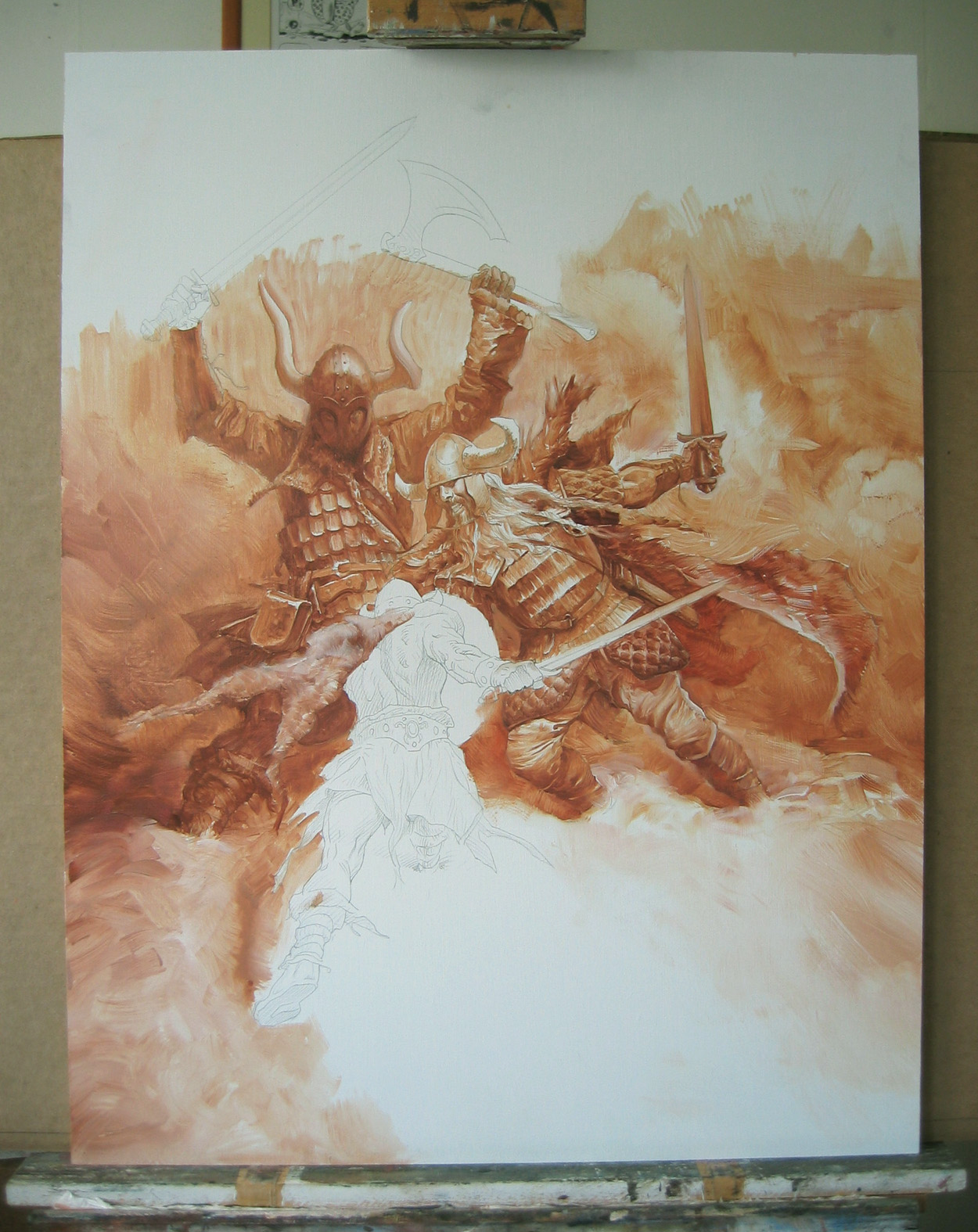
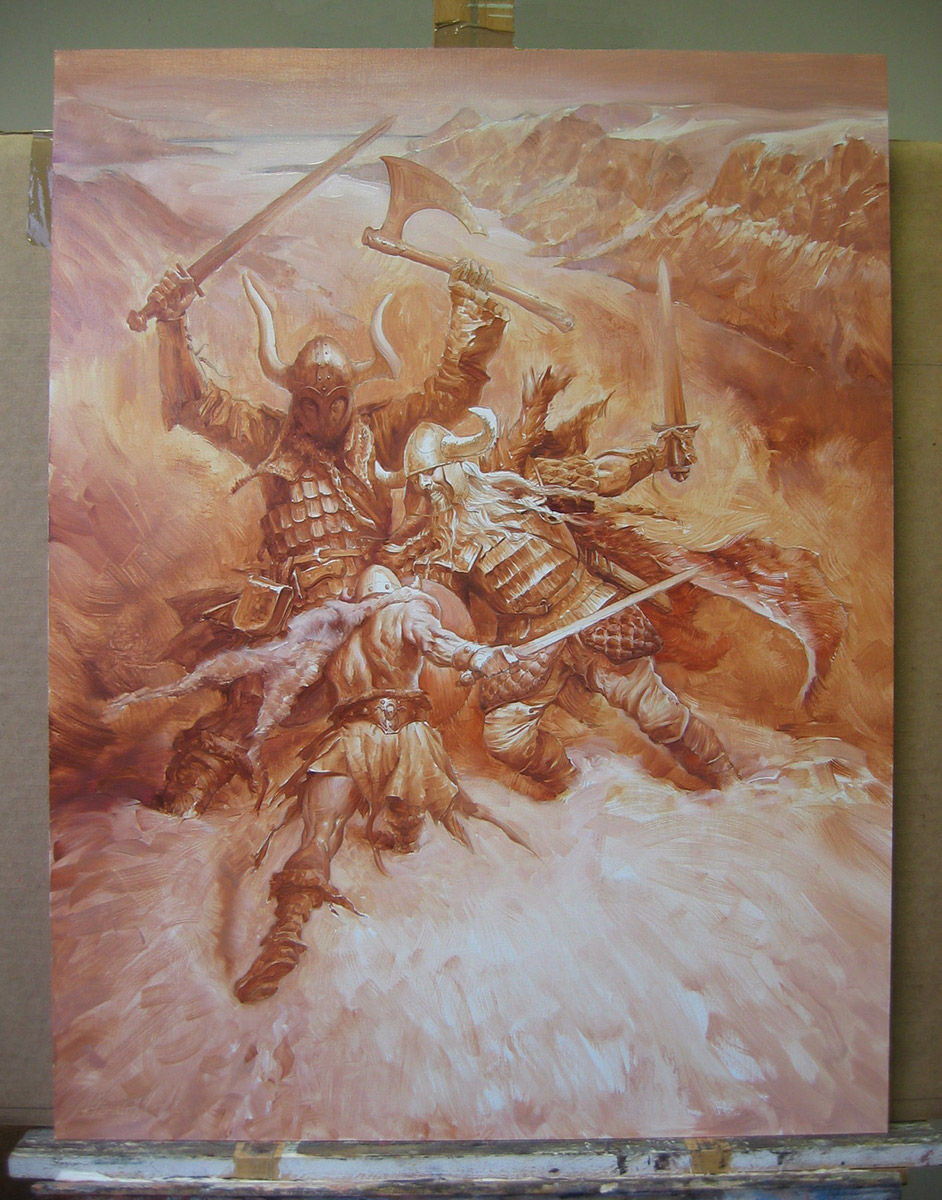
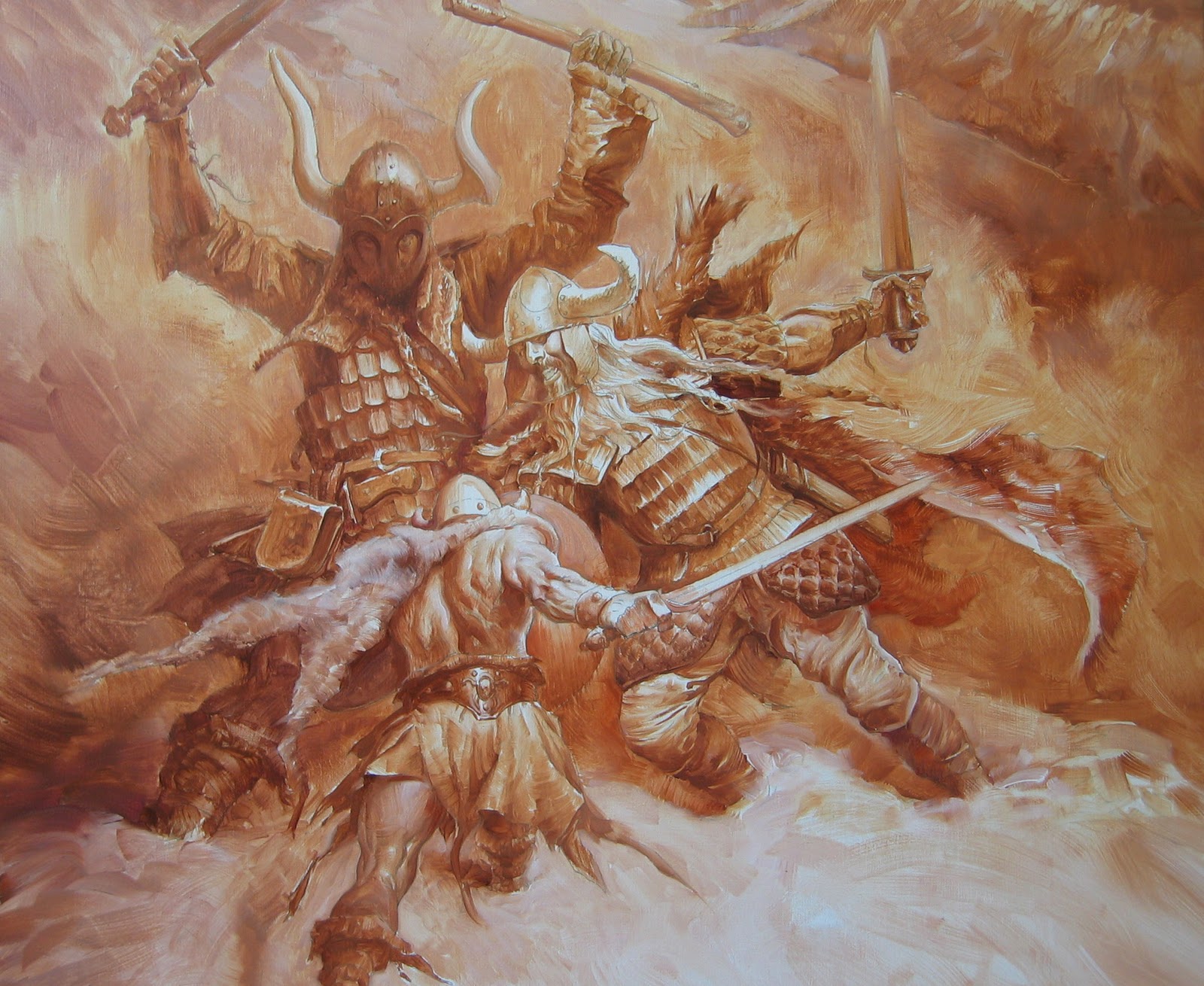
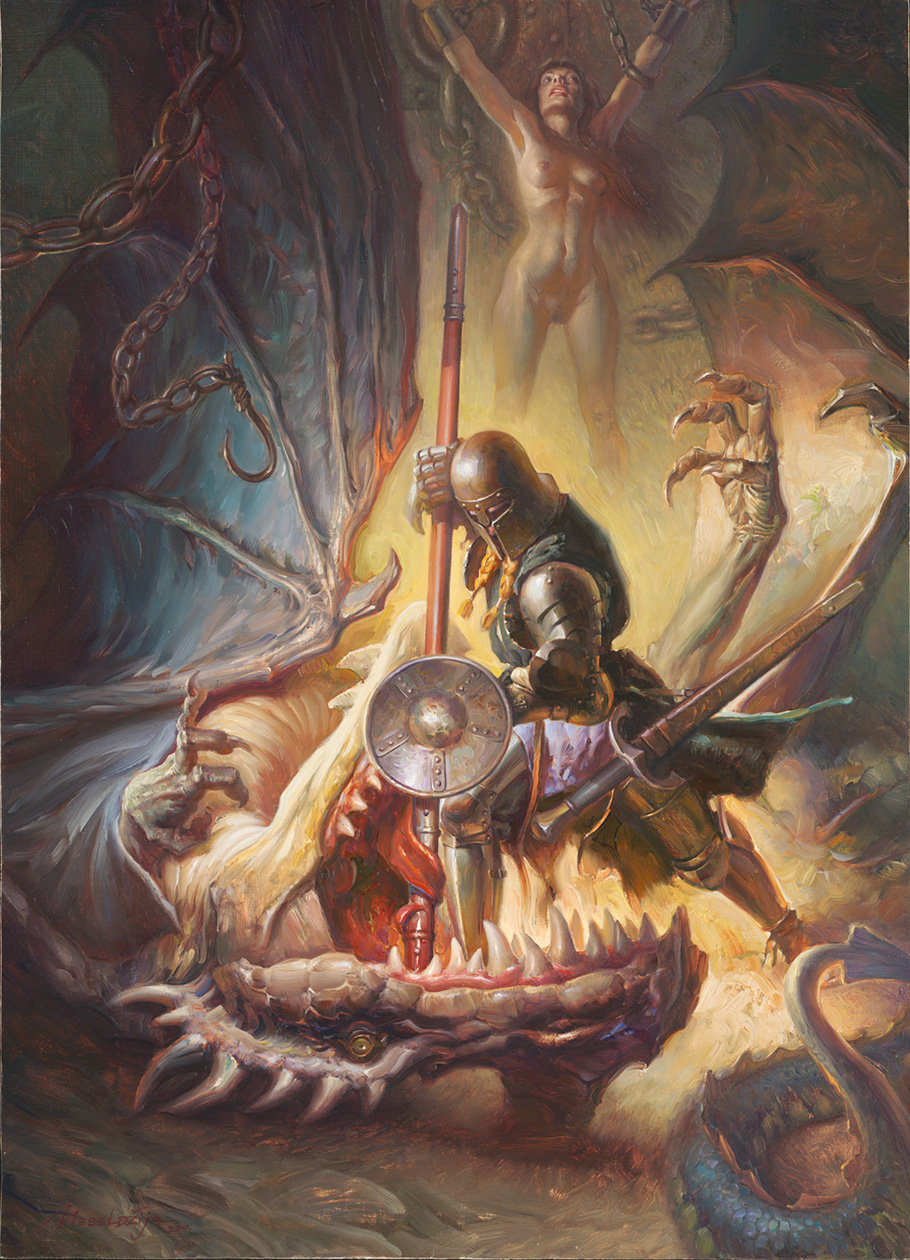
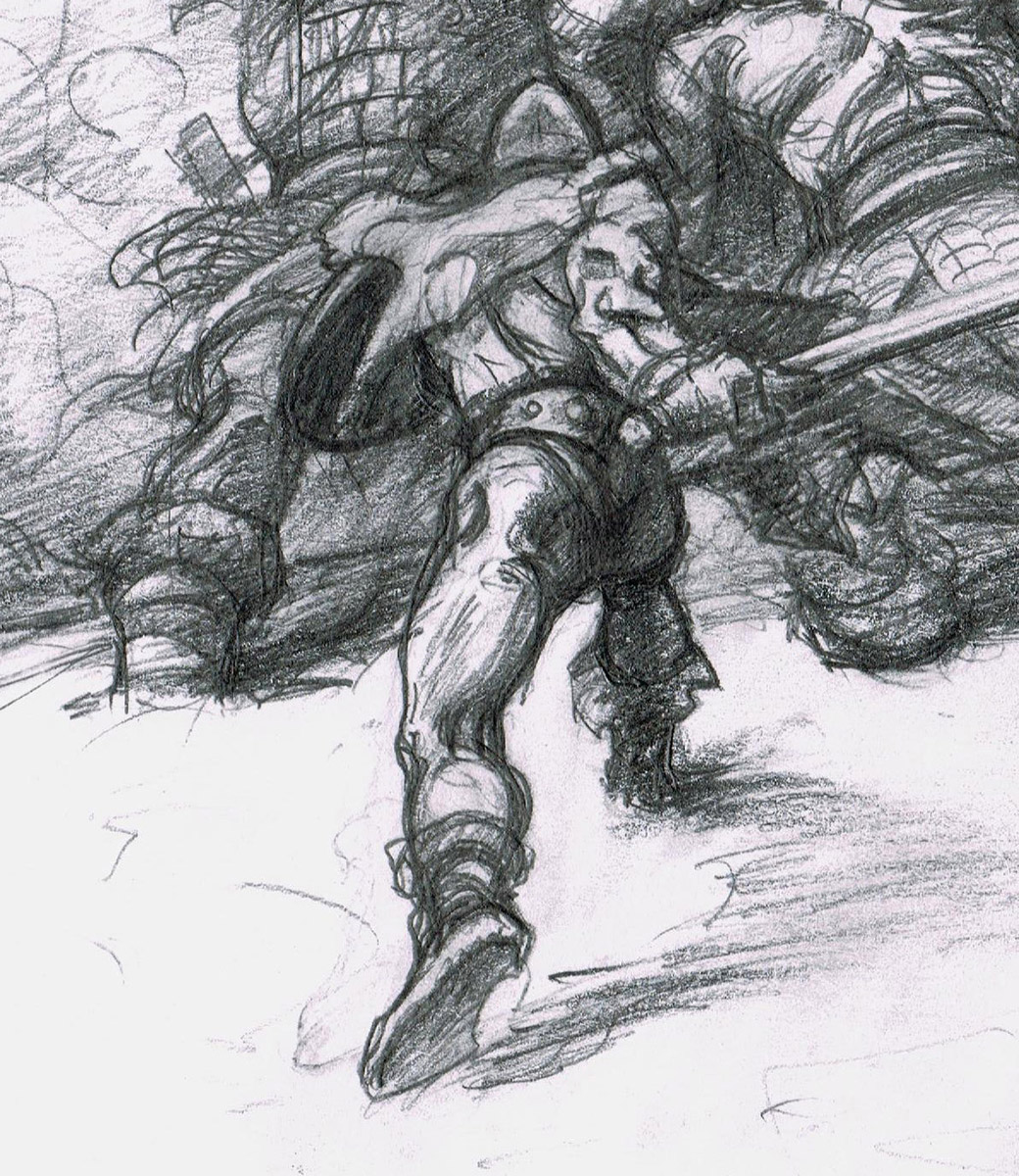
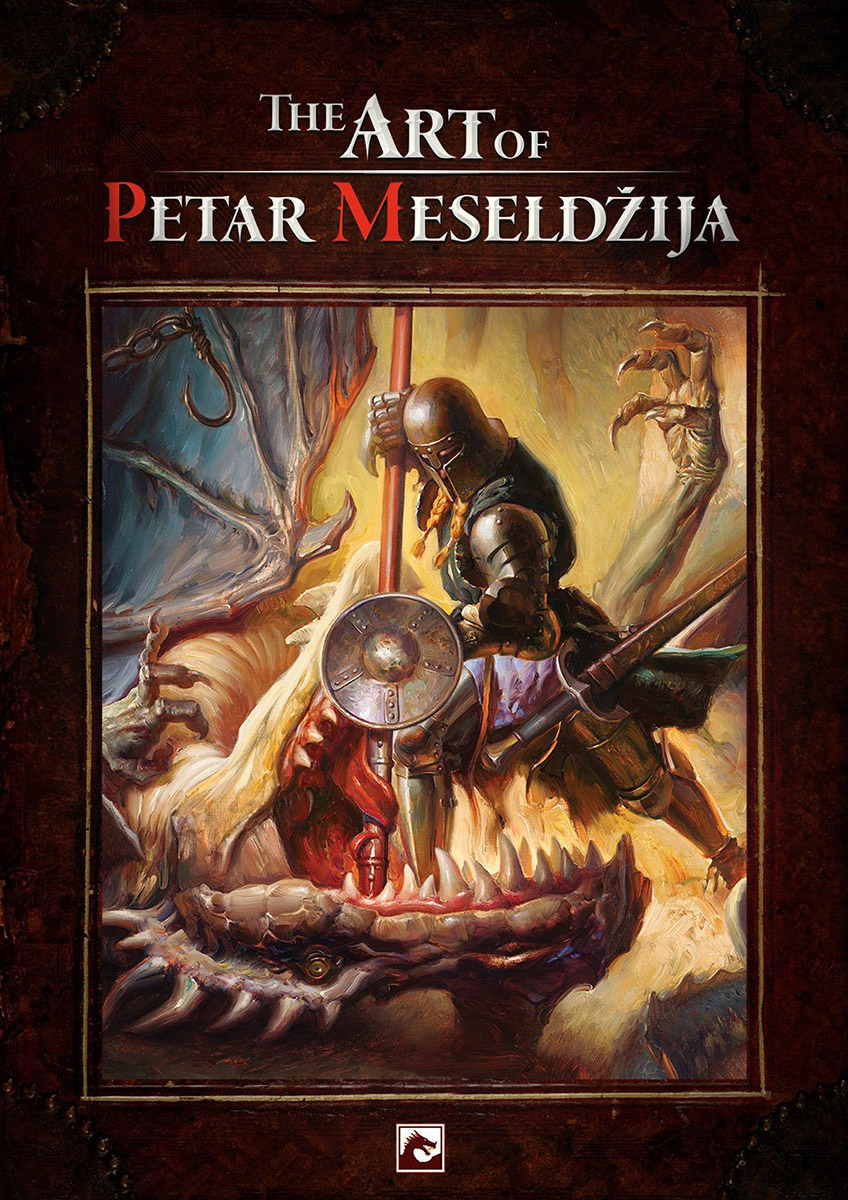
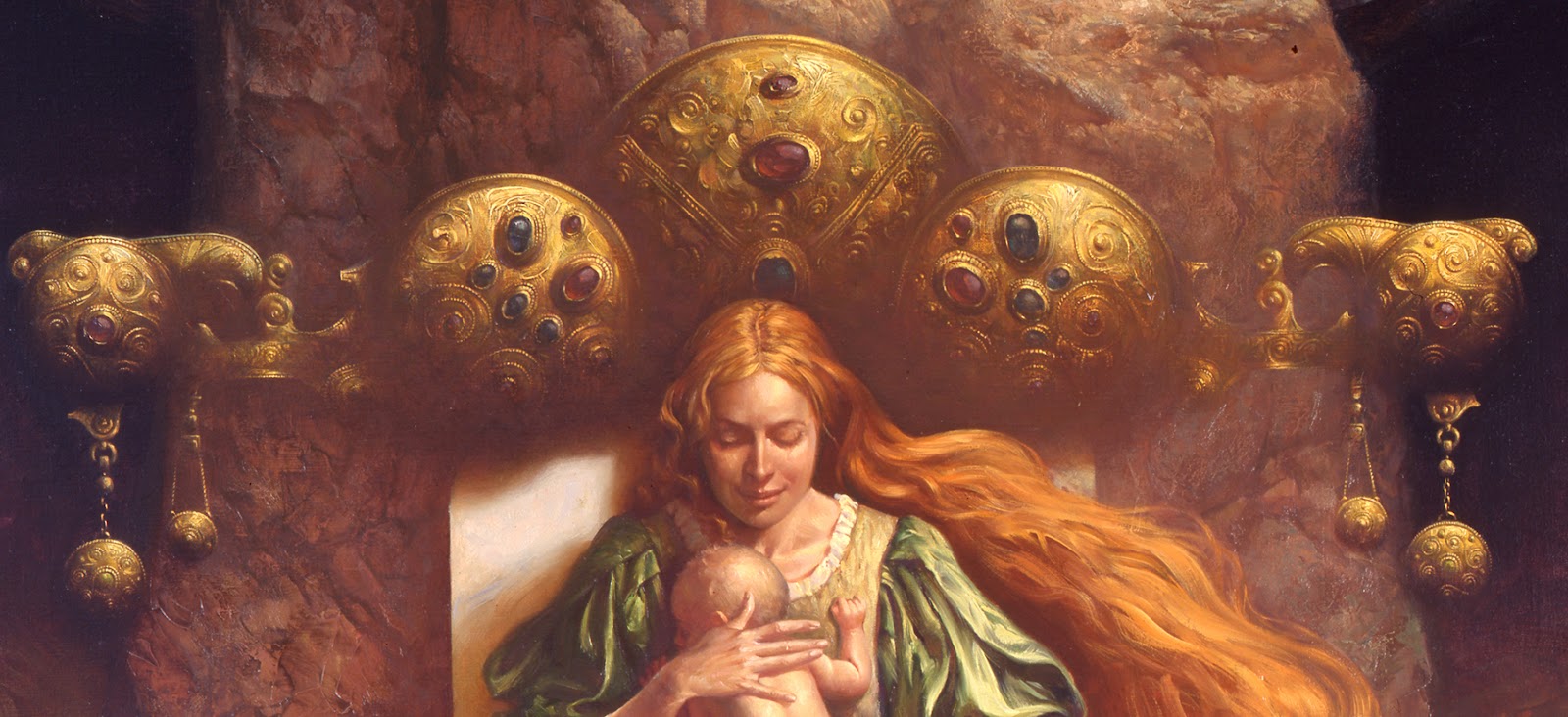
Wow, that looks really awesome. I love the technique!
Jeff
I'm so glad I found you, Petar. And it was from a plug by James Gurney put on his blog on the Book of Cain that you guys worked on for Blizzard.
Can't wait to see how you tackle this challenge!
G'day Petar, is the white the actual canvas showing through or have you painted it with titainium? particulary with the middle guys horns and armour. I suspect it's the canvas but I can't tell from the image.
Cheers,
Rick.
Wow, thanks for sharing this. The insights of you technique are inspiring.
Nice Man always love seeing your process. Thanks for letting us see it. Have fun and good luck on this Adventure!
beside the inspiring view into your working progress I wanted to thank you for the poetic approach
and just in case anyone interprets Prousts words in an anatomical way: he speaks about empathy, the ability to “think” yourself into others minds. an ability that gets more and more rare nowadays…
Beautiul! Any specific thoughts behind your choice of colours for underpainting? Do you always use the same reddish colours?
WOW!
This is looking really promising, thanks for sharing and best of luck with the rest of the painting process!
The background landscape really takes this up to another level in terms of scope…
Please tell me you'll make prints of these! Absolutely stunning!
i quite like that quote! i tried many times and failed just as many times to paint using an underpainting; it just didn't work for me. but perhaps with more time and practice. :*)
Everytime amazed. I was never really much into oils, so I dont really get why it is good to put so much time into an underpainting. Depending on the color above you might not see anything of it later.
some enlightenment would be nice.^^
Rick – Yes, it is the actual canvas (gesso board, to be precise) showing through.
Mathias – thanks for the additional clarification.
cegebe – Yes, I always use these reddish colors for my underpainting. Why? I like when the underpainting is warm, so that when the next layer (which is often transparent) is applied on the top of it, the colors (especially the shadows), get enriched with a warm glow. It enhances the “presence” of light in the painting.
David – Excellent! I am glad that you stressed the importance of the background!
Markus –“… my underpainting has become quite detailed in the recent years. The reason is that my use of the alla-prima technique has grown through the years. Therefore I find it necessary to solve the main problems first, which means that all shapes are defined and that the tonal values and the balance between light and dark are satisfactory. This enables me to immediately start painting in the color and finish the part of the painting I am working on, in one layer. In other words, I work wet-on-wet. I enjoy the challenge of the wet paint, its fluidity and disobedience….” (From the Flesk interview)
Also, I think I should add the following:
Because there is no “delete button”, when you work with traditional techniques, you have to deal with the phenomenon of a “fatigue” of the material you work with. In other words, after some time the surface you work on (or the colors), get muddy, worn out, lifeless, tired, dead… This appears to be a source of unavoidable annoyance to many artists who use the traditional means. Therefore it is advisable to make as less mistakes as possible during the process of painting (unless your style depend on taking the “advantage” of mistakes, which is also possible, only this requires a higher level of skill and insight). Starting with an underpainting is one of the ways of dealing with this problem.
On the other hand, this situation of “fatigue” creates a specific set of problems, or limitations. Although often very irritating, these limitations at the same time force you to develop certain abilities and insights, which otherwise would probably stay undeveloped. In my opinion, the dealing with these obstacles plays a key role (on different levels) in shaping a master painter.
Thanks, guys!
Fantastica tu “grisalla”me encanta tu dominio del color y la forma,el movimiento de tus figuras denota un gran conocimiento, Un capolavoro!!Te felicito